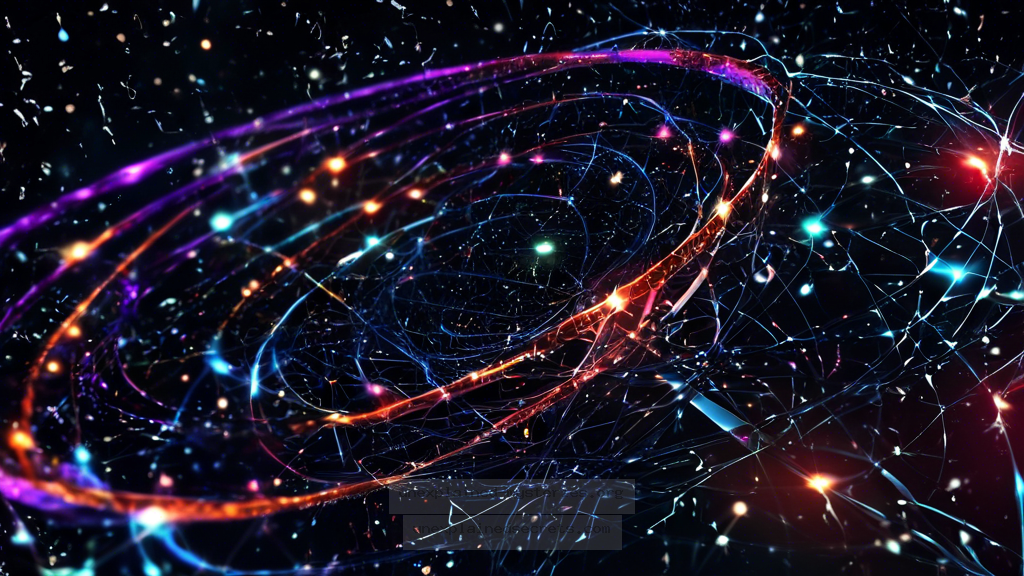What Causes the Mysterious Disappearance of Matter in Quantum Physics?
What Causes the Mysterious Disappearance of Matter in Quantum Physics?
The realm of quantum physics is filled with phenomena that challenge our understanding of reality. One of the most compelling mysteries in this scientific domain is the perplexing behavior of matter and its seemingly inexplicable disappearances. This question matters not only for physicists but also for our fundamental understanding of the universe. How can particles exist in one state and then vanish in another? What does this mean for the fabric of reality itself? Join us as we delve into this scientific anomaly, exploring historical context, core concepts, practical implications, alternative perspectives, misconceptions, and future developments.
Historical Context: The Evolution of Quantum Theory
The journey into quantum physics began in the early 20th century with Max Planck’s introduction of quantized energy levels in 1900. Albert Einstein further contributed to this field with his explanation of the photoelectric effect in 1905, establishing the particle nature of light. However, it was Niels Bohr and his model of the atom that laid the groundwork for understanding atomic behavior and quantum transitions. Over the decades, the Copenhagen interpretation and many-worlds theory have emerged, challenging our perception of reality, particularly regarding the behavior of particles at a quantum level.
Core Concepts: Understanding Quantum Mechanics
At the heart of quantum physics lies the concept of wave-particle duality. Particles, such as electrons, exhibit characteristics of both waves and particles, depending on how they are observed. When unobserved, particles exist in a superposition of states, meaning they can be in multiple locations or states simultaneously. This leads to the phenomenon where they can appear to “disappear” or transition between states without a clear trajectory, a concept famously illustrated by Schrödinger’s cat thought experiment. The core principles of quantum mechanics challenge classical physics, suggesting that our intuitive understanding of matter is fundamentally flawed.
Practical Implications: The Role of Quantum Entanglement
Quantum entanglement is one of the most fascinating implications of quantum mechanics. When two particles become entangled, the state of one instantly influences the state of the other, regardless of the distance separating them. This phenomenon was famously described by Einstein as “spooky action at a distance.” The implications for information transfer, quantum computing, and encryption are profound. Yet, the idea that information can be transmitted instantaneously raises questions about the nature of matter and energy, suggesting that our understanding of “disappearance” may hinge on these entangled states.
Real-World Examples: The Double-Slit Experiment
The double-slit experiment is a cornerstone of quantum mechanics that vividly illustrates the mysterious behavior of matter. When particles like electrons are fired at a barrier with two slits, they create an interference pattern on a screen behind the barrier, suggesting wave behavior. However, when observers measure which slit the electrons pass through, they behave like particles, and the interference pattern disappears. This experiment highlights how the act of observation influences the behavior of particles, leading to questions about the nature of reality and the disappearance of matter.
Alternative Perspectives: The Many-Worlds Interpretation
One of the most intriguing alternative perspectives to explain the disappearance of matter is the many-worlds interpretation (MWI) proposed by Hugh Everett III in 1957. According to MWI, every quantum event creates a branching of the universe into multiple, coexisting realities where different outcomes occur. In this view, when a particle appears to disappear, it has not truly vanished but has transitioned into a different branch of reality. This interpretation shifts our understanding of existence and the fabric of the universe, suggesting that all potential outcomes are realized in parallel universes.
Common Misconceptions: Clarifying Quantum Mechanics
Many misconceptions surround quantum mechanics that can cloud our understanding of matter’s behavior. One common myth is that quantum particles can instantaneously travel between locations, which is not explicitly accurate. Quantum tunneling allows particles to pass through barriers, but they do not “disappear” in the traditional sense. Another misconception is the notion that observing a particle changes its state; rather, it is the measurement process that collapses the wave function, determining the particle’s state. Understanding these distinctions is crucial for grasping the complexities of quantum phenomena.
Best Practices for Investigation: Approaching Quantum Mysteries
Investigating the mysteries of quantum physics requires a methodical approach. Scientists employ advanced experimental techniques, such as quantum state tomography, to analyze and reconstruct quantum states. Researchers also utilize sophisticated technologies like superconducting qubits and trapped ions to observe quantum behaviors. Engaging in interdisciplinary studies that incorporate physics, mathematics, and philosophy can provide a more comprehensive understanding of these anomalies. Furthermore, fostering collaborations among physicists, mathematicians, and computer scientists can lead to breakthroughs in quantum research.
Future Developments: The Quest for Quantum Understanding
As technology advances, so does our capacity to explore quantum phenomena. Quantum computing is at the forefront of this research, with the potential to revolutionize fields such as cryptography and complex problem-solving. Scientists are also investigating the implications of quantum mechanics for cosmology, particularly in understanding dark matter and dark energy. With ongoing research into quantum entanglement and the search for a unified theory that encompasses both quantum mechanics and general relativity, we stand on the brink of potentially transformative discoveries that could redefine our understanding of the universe.
Key Insights:
- Quantum mechanics challenges classical assumptions about matter and reality.
- Wave-particle duality and quantum entanglement are fundamental concepts.
- The double-slit experiment exemplifies the perplexing behavior of particles.
- Alternative interpretations like the many-worlds theory offer new perspectives.
- Future developments in quantum research could reshape our understanding of the universe.
Conclusion: The Ongoing Mystery of Matter and Its Disappearances
The mysterious disappearance of matter in quantum physics is a captivating phenomenon that continues to provoke thought and debate among scientists and philosophers alike. Through historical context, core concepts, real-world examples, and ongoing research, we gain insight into a reality that is far more complex than our classical intuitions suggest. As we delve deeper into the quantum realm, we open ourselves up to a multitude of possibilities, each more fascinating than the last. The journey to unravel the mysteries of matter is far from over, and with each discovery, we inch closer to understanding the very fabric of our universe. ⚛️
Other Articles
Recent Posts
- What Happened to Flight MH370? The Conspiracy Theories That Still Haunt Us
- What Secrets Lurk Within the Walls of the Infamous Trans-Allegheny Lunatic Asylum?
- What Evidence Supports the Existence of Bigfoot in the Pacific Northwest?
- What Happened to the Indus Valley Civilization? Unraveling the Mysteries of Ancient Urban Life
- Can Telepathy Be Scientifically Proven Through Laboratory Evidence?







